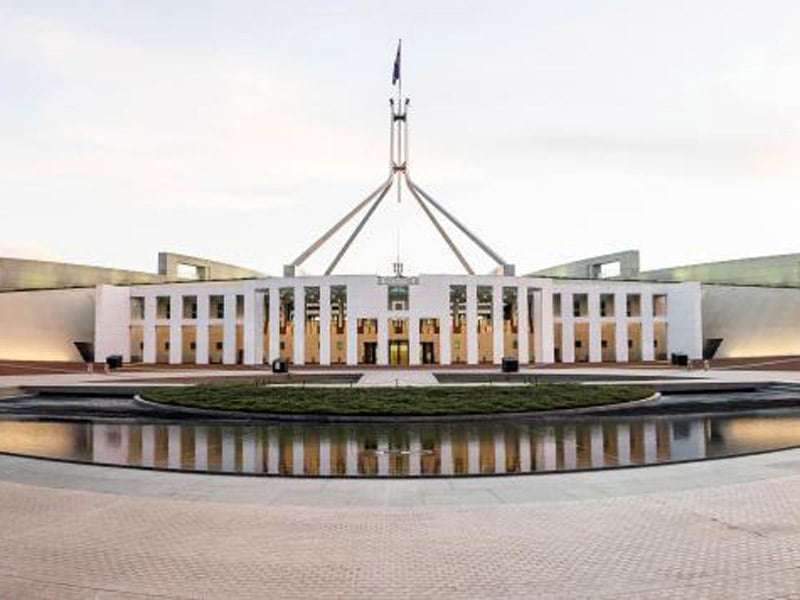The so-called polling “worm” used by the Seven Network during the first leaders’ debate at the National Press Club last night broke significant new ground, with new technology enabling more than 10,000 viewers to provide real-time feedback at a rate up to 1,000 new data points per second.
The viewer engagement system was developed by Sydney-based technology startup iPowow, which counts major broadcast networks and production companies in the US and Europe as its customers. Last night was its debut into the Australian political scene.

There will be a lot of talk about worms in the next several days. In fact, the worm issue will likely generate as much debate as anything Kevin Rudd or Tony Abbott had to say.
The worm, as represented by the squiggly line at the bottom of your television screen, provides real-time emotional responses of viewers to the debates.
In the past, the worms have been created by giving a small pre-selected audience a device to input positive or negative feelings about debate topics as it progressed.
Last night, for example, the Nine Network’s GEM channel invited 100 ‘undecided’ voters into a studio to create a real-time worm. This is also how professional polling companies like Roy Morgan measure audience response – and surely both political parties were running internal polling of the debate last night.
But Channel 7 did something a little bit interesting last night, using a viewer-engagement technology developed iPowow to enable thousands of people watching the debate from home to deliver real-time input to the worm.
Channel 7 said last night that more than 10,000 people from around Australia – presumably sitting on their lounges – participated in the network’s real-time Viewer Vote worm. At one point the system was receiving more than 1,000 data points a second – that’s 1,000 viewers per second providing feeding.
More than 18,000 voted in a post-debate questionnaire asking questions like who had won the debate and who would be Australia’s next Prime Minister.
Channel 7 was using a viewer engagement platform developed by Sydney-based tech start-up iPowow.
Using the iPowow technology, the first political debate broke significant new ground, and anyone with a passing interest in Big Data analytics will recognise how valuable the data extracted through this process might be.
The sample size of the respondent group was orders of magnitude larger than a studio audience. The participants were accessing the Viewer Vote system from all over Australia. Registering for the system, viewers indicate their sex, age and the city they live in. But IP addresses and location data can provide a much more accurate picture, and could potentially provide real-time response data, electorate by electorate (although this was not the case last night.)
Audience sizes on each channel were diluted by the number of different networks that carried the debate live. And it was carried on secondary digital stations, and competing against prime time Sunday night stuff like X Factor and Australia’s Got Talent. Although 10,000 people participating on the Channel 7 worm is impressive in the political worm world, it can be far, far larger.
iPowow provided the platform for the Vodafone Viewers’ Verdict system during the 2011-12 Ashes series. Its sole purpose was viewer engagement, and by any measure it was spectacularly successful.
The Ashes viewing audience averaged between 500,000 to 600,000 and the Vodafone Viewer Verdict – asking questions like whether Clarke should declare or bat on – produced average viewer participation rates above 12 per cent. That’s near 150,000 people giving Clarkey the benefit of their opinion (and 80 questions were asked through the series.)
For a US network, iPowow deliver a viewer engagement system for the Miss Universe pageant. At one stage, it registered 23.6 million votes from a global audience in nine minutes. So it can certainly scale.
But that’s a beauty pageant. A political contest is obviously different, and the real-time user feedback is effectively an emotional response to key points made in the debate, or even key words.
With the addition of small amounts of additional demographic information, and washed against location data of devices, this data could deliver immensely valuable insights to the people trying to shape the political discourse.
Incidently, iPowow is in massive growth phase. The company has raised about $4 million in early funding since it was founded and is about to close another round of a similar size. iPowow employs 23 people, but expects that number to grow to about 60 by the end of the year.
Do you know more? Contact James Riley via Email.

